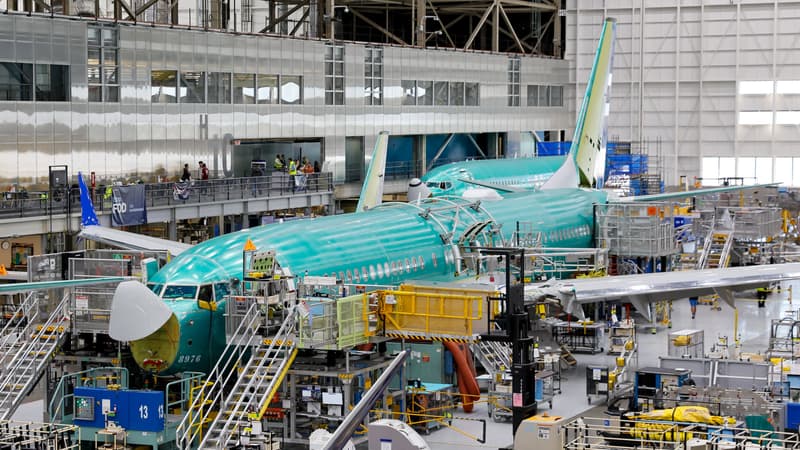The global commercial fleet is expected to be composed of just under 50,000 aircraft in 2044, including almost 44,000 manufactured by then, according to the forecasts of the American manufacturer Boeing, which reviewed it slightly downward compared to the previous year.
Supply problems “played a small role in our slight reduction in deliveries in the next twenty years,” said Darren Hulst, vice president of Boeing in charge of the commercialization of the Commercial Aviation Branch (BCA), during a presentation to La Prensa on Tuesday, before the accident of a 787 Dreamliner of Air India.
Since 1961, the aircraft manufacturer has published a seller market perspective (CMO), forecasts at the age of twenty, upstream of the main aeronautical fairs in Bourget (France) and Farnborough (United Kingdom), which alternate every year.
In 2025, it was the turn of the oldest and largest aerospace meeting in the world, near Paris, since Monday.
Restart the difficult supply chain
Kelly Ortberg, Chief of Boeing, and Stephanie Pope, head of BCA, canceled their presence after the accident in India, which left at least 279 dead.
According to him, it is only “towards the end of the current decade” that factories manage to produce as much as necessary to satisfy this appetite.
At this stage, the command books of the two main manufacturers, Boeing and its European Airbus rival, which are complete until the beginning of the next decade, “this deficit continues to expand.”
Boeing estimated at 43,600 the number of new aircraft that will be manufactured by 2044, including 21,100 to replace the device in operations currently and 22,500 for traffic growth (passengers and freight), which should emanate to 50% of China and Southeast Asia.
In 2004, the world fleet was 16,780 airplanes. Forty years later, it should be 49,640. The previous CMO anticipated more than 50,000 of 2043.
16,780 aircraft in 2004, 49,640 planned in 2044
Around 72% of the fleet must consist of unique offs (66% in 2024), taking advantage of the development of national and regional flights in emerging markets (+5%) faster than in developed economies (+3%).
The links between emerging markets should also grow faster (+6%) than between emerging and developed (3%) and between developed markets (+2%).
In twenty years, emerging markets and developed markets “will be almost the same size,” said Mr. Hulst, noting that the sector was also “increasingly competitive.”
Therefore, in 2000, the ten largest airlines accumulated 45% of global capabilities. In 2025, it was only 30% of the particular fact of the appearance of the companies of the Middle East, which reduced a good part.
The forecasts have an annual increase of 4.2% to 2044.
Worldwide, specifies the report, the air sector represents $ 4,000 billion, supports 87 million jobs and transports 33% of the value of goods for only 1% of the volume.
Source: BFM TV


